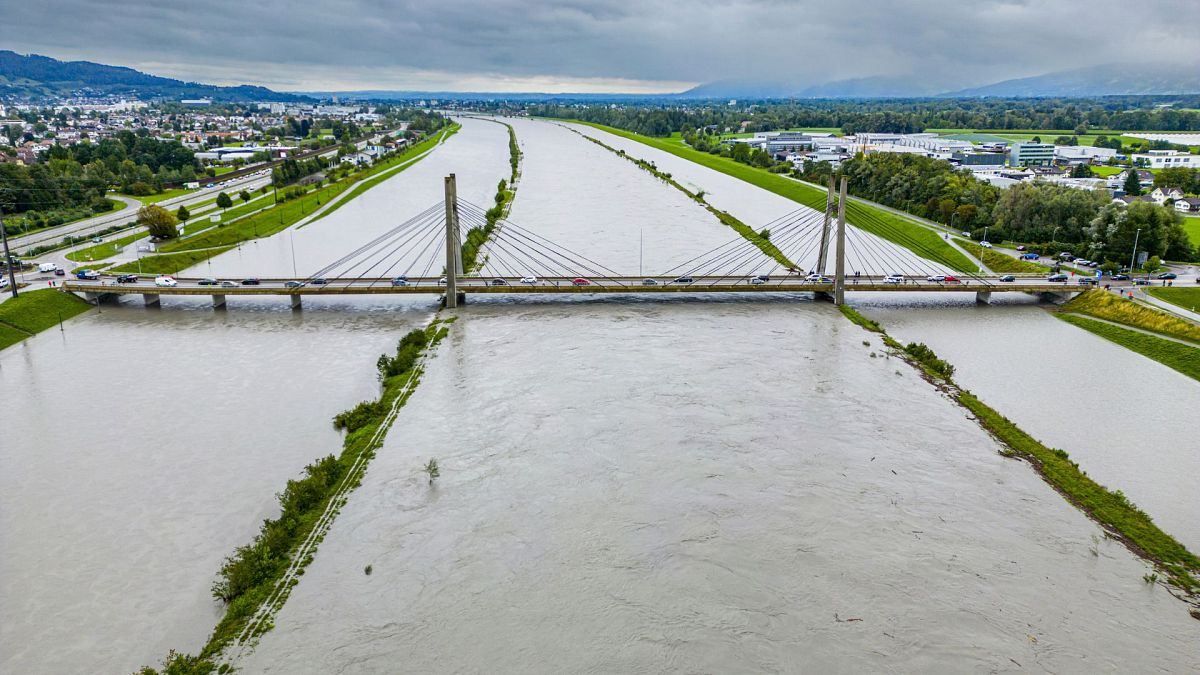The goal is to try to protect 300,000 people in the Rhine Valley from catastrophic flooding.
Austria and Switzerland are planning to invest €2.1 billion into flood protection on the Rhine river.
An agreement was signed by both countries in May and has now been unanimously approved by the Austrian parliament. It is still awaiting approval from the Swiss government and could be subject to a referendum.
The two countries will split the cost of the project equally with the Austrian federal government expecting total costs of around €1.1 billion by 2052.
It comes as Swiss Federal Council member Ignazio Cassis warned earlier this week that recent deadly flooding shows how vulnerable Switzerland is to natural disasters.
Improving flood protection on the Rhine river
Over 26 km of the river, before it meets Lake Constance on the border between Germany, Austria and Switzerland, the plan is to create more space for water.
Here, the Rhine was gradually converted into a more canal-like state during the 20th century. The bed of the river has been narrowed with dams at each side to enhance flood protection.
This has worked for a number of years, but now further measures are needed to prevent catastrophe in the face of climate change.
Currently, the river bed can handle around 3,100 cubic metres of water or a once-in-100-year flood.
It is estimated that an extreme once-in-every-300-year flood could cause up to 11 billion Swiss Francs (€11.3 billion) of damage in Switzerland and Austria. Climate change is making the chances of heavy rain that leads to flooding like this significantly higher.
To solve the problem, engineers want to give the river more space. This means a complete redesign of the river bed, restoring it to its natural state. Some parts could be allowed to spread up to 380 metres wide - today it has 70 metres of spread at its widest.
Preventing flooding and restoring nature
Austria and Switzerland hope that by expanding the river bed they can help protect around 300,000 people in the Rhine Valley from severe flooding.
The Alpine Rhine is also somewhat of an ecological wasteland. Fish species have declined due to the current infrastructure. Invertebrate species have disappeared. Restoring it to its natural state could have major benefits for conservation in the region.
Construction is scheduled to begin in 2027 and could take up to 20 years to complete.















